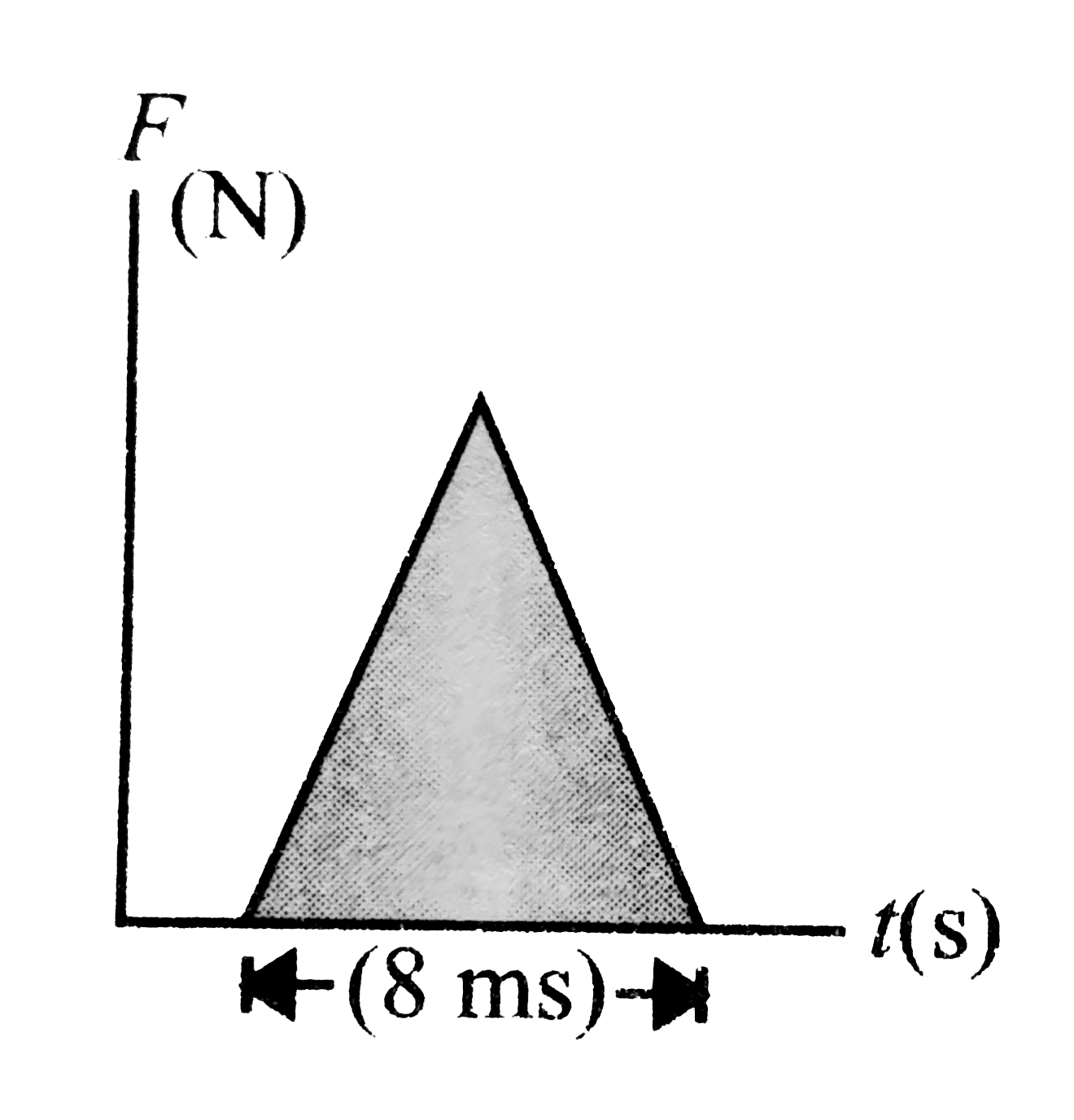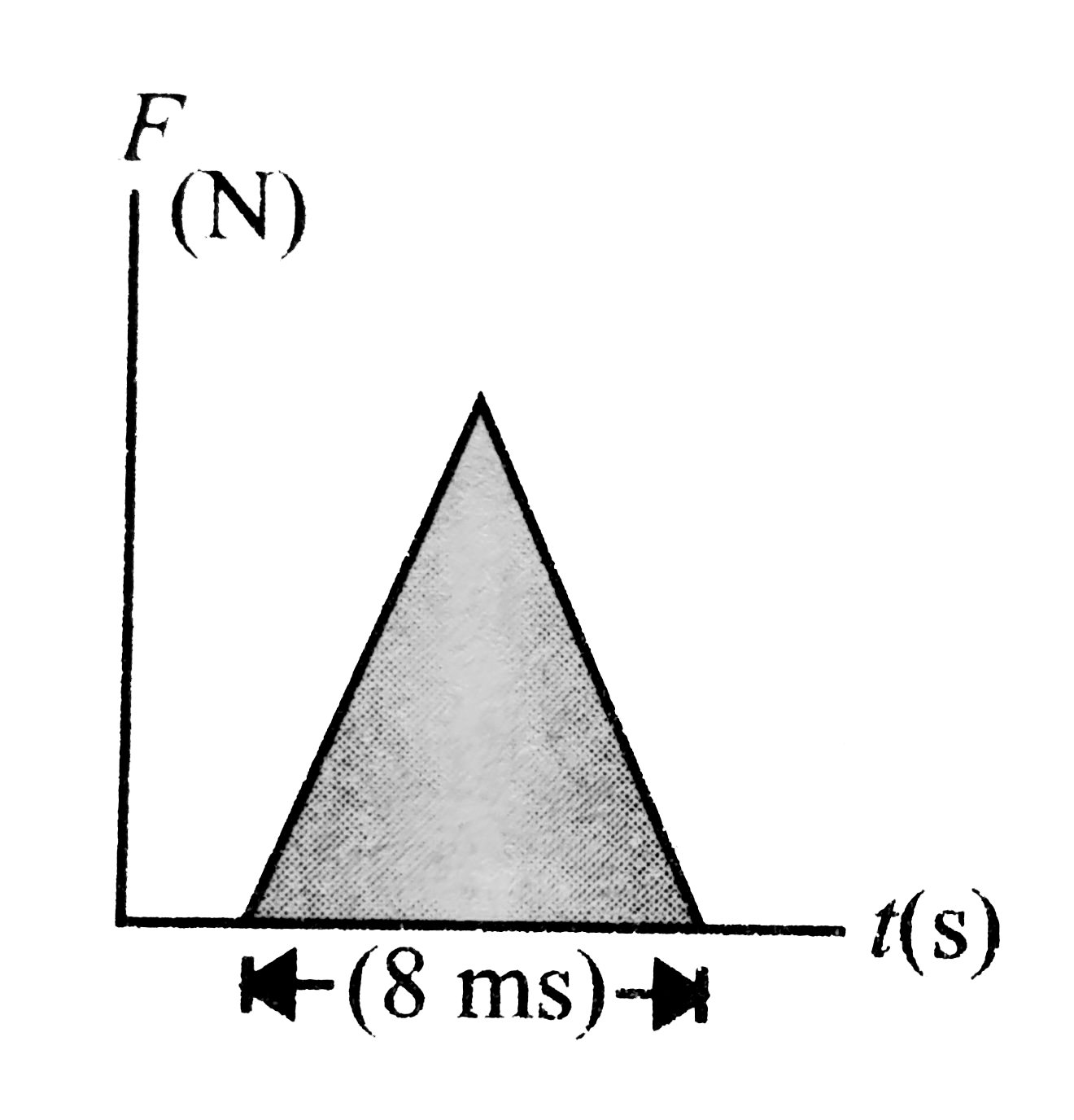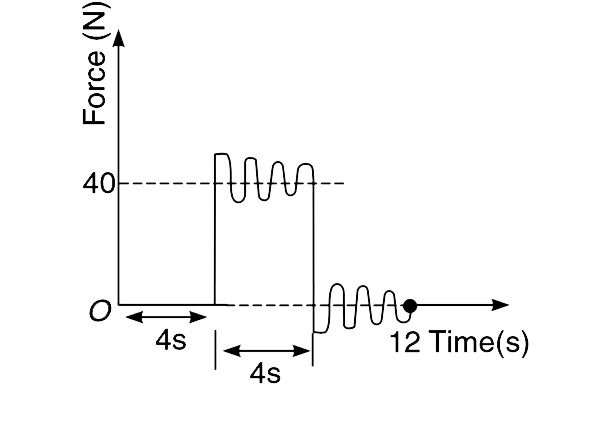Impulsive Force
Step by step video & image solution for Impulsive Force by Physics experts to help you in doubts & scoring excellent marks in Class 11 exams.
Updated on:21/07/2023Similar Questions
Impulse Force||Impulse||Impulse Momentum Theorem
View SolutionA ball hits a floor normally with velocity u and return with same speed. If the ball is in contact with the floor for 0.1 sec, find the average impulsive force acting on the ball. Take the mass of the ball m = 200 gm and u=2m/s.
View Solution
Knowledge Check
After calling a wall of 3m heigh a mass of weight W drops himself to the ground. If his body comes to a complete stop in 0.15s. After his feet touch the ground, calculate the average impulsive force in the vertical direction exerted by ground on his feet.
A5WB5.21WC3WD6WThe following problems illustrate the effect of a time-dependent force of a large average magnitude which acts on a moving object only for a short duration. Such forces are called 'impulsive' forces. According to the impulse-momentum theorem, impulse delivered to a body is equal to the change of linear momentum of the body.
A ball of mass 250g is thrown with a speed of 30m/s. The ball strikes a bat and it is hit straight back along the same line at a speed of 50m/s. Variation of the interaction force, as long as the ball remains in contact with the bat, is as shown in Fig.

Maximum force exerted by the bat on the ball isA2500NB5000NC7500ND1250NThe following problems illustrate the effect of a time-dependent force of a large average magnitude which acts on a moving object only for a short duration. Such forces are called 'impulsive' forces. According to the impulse-momentum theorem, impulse delivered to a body is equal to the change of linear momentum of the body.
A ball of mass 250g is thrown with a speed of 30m/s. The ball strikes a bat and it is hit straight back along the same line at a speed of 50m/s. Variation of the interaction force, as long as the ball remains in contact with the bat, is as shown in Fig.
 After collision with the hard floor, the ball will bounce to a height A0.6mB2.4mC1.2mD1.8m
After collision with the hard floor, the ball will bounce to a height A0.6mB2.4mC1.2mD1.8m
An impulsive force gives an initial velocity of- 1.0ms−1 to the mass in the unstretched spring position [sec Fig. 16.2]. What is the amplitude of motion ? Give x as a function of time t for the oscillating mass. Given m=3 kg and k=1200Nm−1.
View SolutionA particle of mass 1kg is moving with a velocity of 200 m/s. An impulsive force of 4 s duration acts on the particle in a direction opposite to its motion. The force fluctuates a little bit around 40 N magnitude and then it dies out in next 4s showing small fluctuations. An oscilloscope records the force as shown. The two oscillating components in the graph are identical except that one is mirror image of the other. Find the magnitude of velocity of particle after the force stops acting.

View SolutionImpulse|Forces|Questions|Collisions
View SolutionImpulse|Forces|Questions|Collisions
View SolutionChoose the pairs of quantities which have same dimensions : Impulse, force, work, momentum, moment of force, tension.
View Solution
